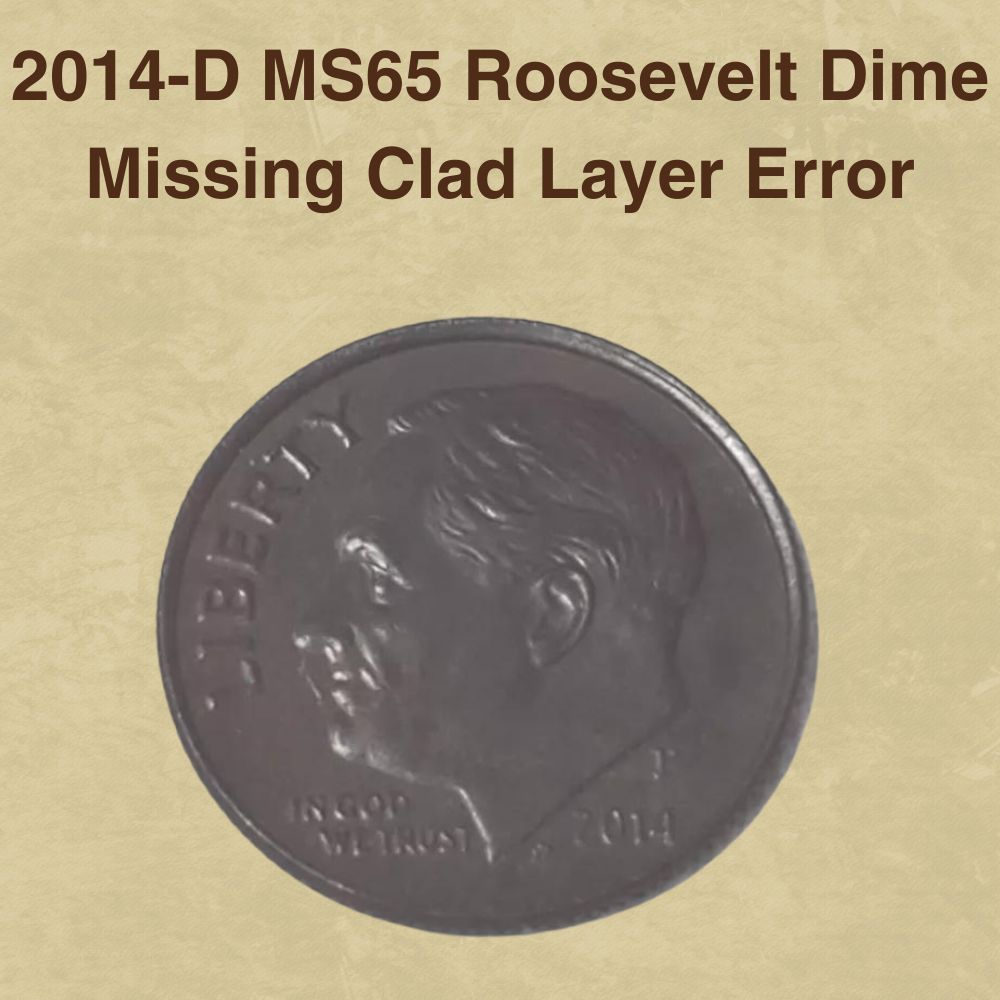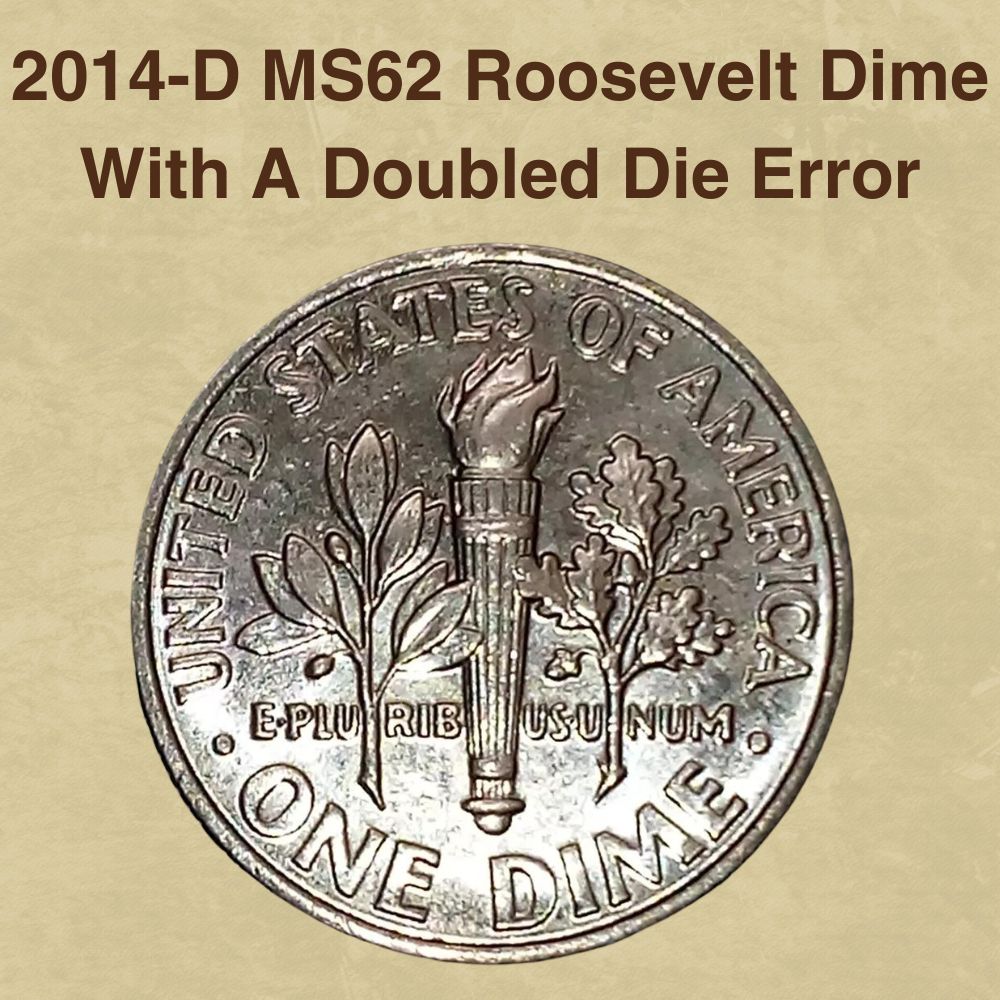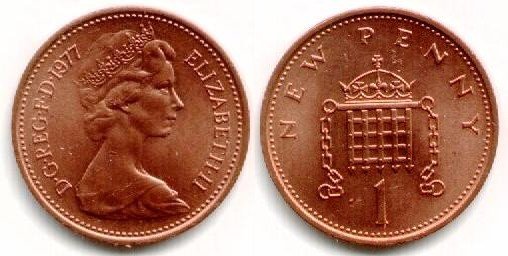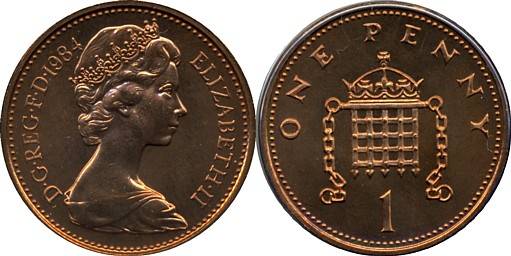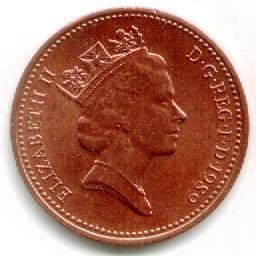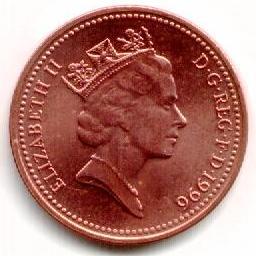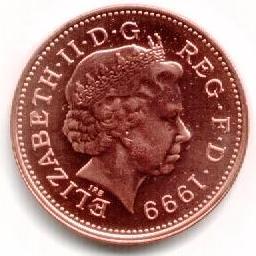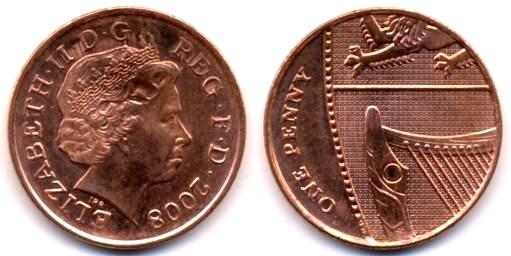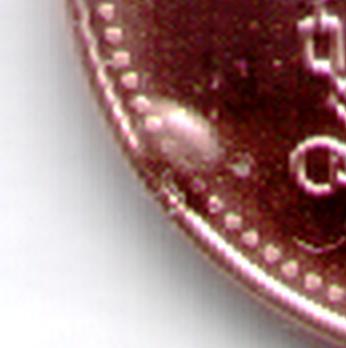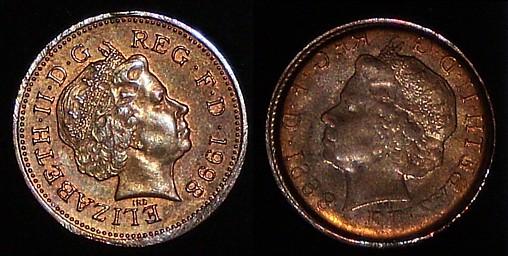Continue reading to learn everything you need to know about a 1972 quarter value, chart, varieties, errors, grading, and more. Let’s start!
1972 Quarter Value Details
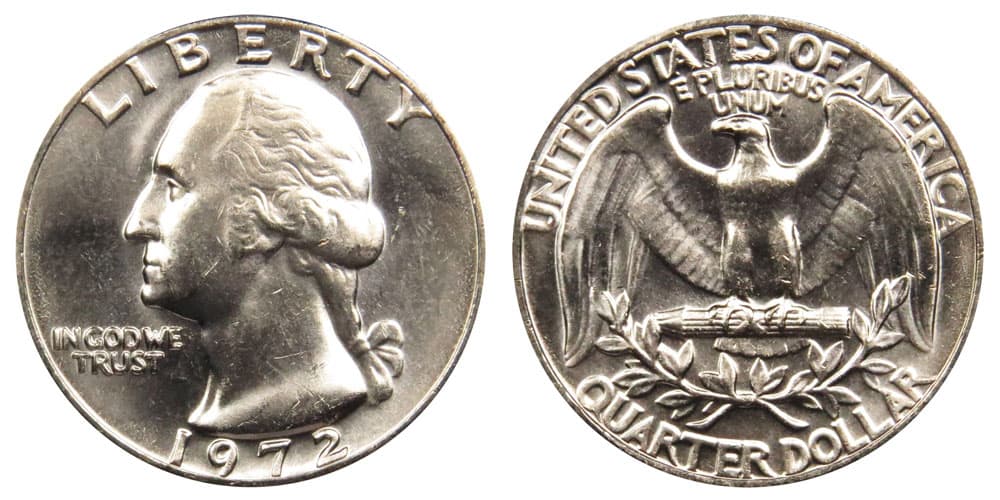
- Category – Washington quarters
- Mint – Philadelphia, Denver, San Francisco
- Mintage – 529 376 728
- Obverse designer – John Flanagan
- Reverse designer – John Flanagan
- Composition – copper and nickel (91.67% and 8.33%)
- Weight – 5.67 grams (0.2 ounces)
- Diameter – 24.3 millimeters (0.95 inches)
A quarter from 1972 is not rare at all. The US mint produced more than half a billion of these coins in three locations – Philadelphia, Denver, and San Francisco.
The coin was designed by John Flanagan and it consists of more than 90% of copper and the remaining a bit over eight percent nickel. It weighs 5.67 grams and is 24.3 millimeters in diameter.
Also Read: Top 15 Most Valuable Quarters In Circulation
1972 Quarter Value Chart
A 1972 quarter’s starting price is its face value, 25 cents. This is the price for the coins that are graded poorly. The better the condition of your quarter is the more money you can expect to get if you are looking to sell it.
The price for the quarters produced in 1972 that are in fair, good, or fine condition goes up to around five dollars, while those that are in uncirculated condition can sell for a couple of dollars more.
Quarters from 1972 that are rated between 60 and 65 can reach the price of around $15 to $20. The most valuable are those that are rated 65+ and they can be worth up to fifty dollars on average.
If you are lucky and have a coin that is in perfect condition and you find an interested buyer, you may even get several hundred dollars for it.
| Condition | 1972 No Mint Mark Quarter Value | 1972 D Mint Mark QuarterValue | 1972 S Mint Mark Quarter Value |
| Poor | $0.25 | $0.25 | $0.25 – $2 |
| Fair | $0.25 | $0.25 | $2 – $3 |
| About good | $0.25 – $0.50 | $0.25 – $0.50 | $3 – $4 |
| Good | $0.50 – $1 | $0.50 – $1 | $4 – $5 |
| Fine | $1 – $1.50 | $1 – $1.50 | $5 – $6 |
| Very fine | $1.50 – $3 | $1.50 – $3 | $6 – $7 |
| Extremely fine | $3 – $5 | $3 – $5 | $7 – $10 |
| About Uncirculated | $5 – $6 | $5 – $6 | $10 – $20 |
| Mint state (60-64) | $6 – $15 | $6 – $15 | $20 – $30 |
| Mint state (65-67) | $15 – $20 | $15 – $20 | $30 – $40 |
| Mint state (68-70) | $20 – $50 + | $20 – $50 + | $40 – $100 + |
1972 Quarter Value & Varieties Guide
The coins that the US Mint produces are made in different locations, which determine a coin’s mint mark and variety. In the case of the 1972 quarter, the locations were Philadelphia, Denver, and San Francisco.
Let’s learn more about each of these varieties.
1972 Quarter No Mint Mark Value
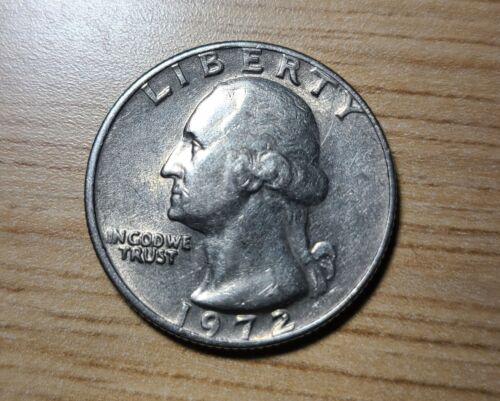
Quarters made in 1972 without a mint mark were produced in Philadelphia. Back then, this mint still hadn’t started using mint marks, which is why you won’t find one on the coins it produced.
The Philadelphia mint made more than 200 million quarters in 1972. Most of them are still worth only their face value, or 25 cents. The coins in good condition can sell for around a dollar, while those that are uncirculated can reach the price of around six dollars.
The 1972 quarters that are graded between 60 and 65 can be worth up to $20, while those graded 65+ can reach the price of more than 50 dollars.
- Type – Washington quarter
- Edge – reeded
- Mint mark – no mint mark
- Place of minting – Philadelphia
- Year of minting – 1972
- Face value – 25 cents
- Price – $0.25 – $50+
- Quantity produced – 215 048 000
- Designer – John Flanagan
- Composition – copper and nickel (91.67% and 8.33%)
- Mass – 5.67 grams (0.2 ounces)
- Diameter – 24.3 millimeters (0.95 inches)
1972 Quarter D Mint Mark Value
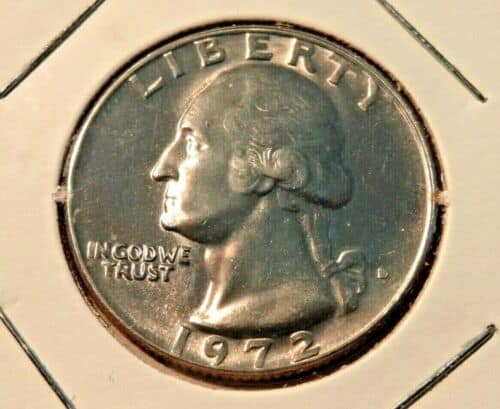
The different mints normally make a different amount of coins. The Philadelphia mint is the main one which is why it usually puts in circulation more coins than the other ones. This is, however, not true in the case of the 1972 quarter, as the Denver mint produced most of them.
This mint made more than 300 million quarters in 1972. The starting price of these coins is twenty-five cents and they can sell for more than fifty dollars if in perfect condition.
There is not much difference in the price of a 1972 quarter without a mint mark and with a D mint mark. They were made in large numbers so they are almost equally common.
- Type – Washington quarter
- Edge – reeded
- Mint mark – D mint mark
- Place of minting – Denver
- Year of minting – 1972
- Face value – 25 cents
- Price – $0.25 – $50+
- Quantity produced – 311 067 732
- Designer – John Flanagan
- Composition – copper and nickel (91.67% and 8.33%)
- Mass – 5.67 grams (0.2 ounces)
- Diameter – 24.3 millimeters (0.95 inches)
1972 Quarter S Mint Mark Value
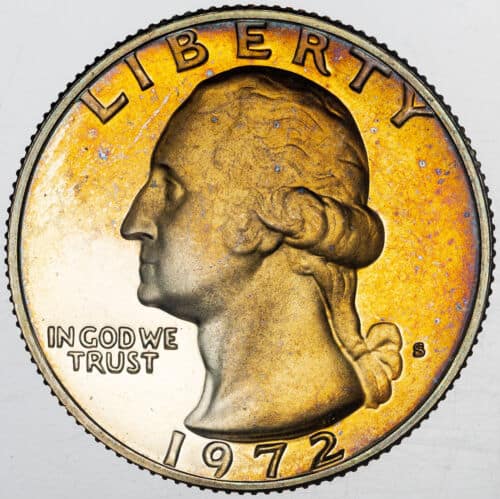
The San Francisco mint made only proof quarters in 1972 and only over three million of them. This is still a large number so even the quarters from 1972 with the S mint mark are not rare and, therefore, not very valuable.
They are still slightly more expensive than the Philadelphia and Denver quarters. The starting price for the quarters in poor condition is 25 cents, but it can go as high as over a hundred dollars for the coins graded 65 and more.
- Type – Washington quarter
- Edge – reeded
- Mint mark – S mint mark
- Place of minting – San Francisco
- Year of minting – 1972
- Face value – 25 cents
- Price – $0.25 – $100
- Quantity produced – 3 260 996
- Designer – John Flanagan
- Composition – copper and nickel (91.67% and 8.33%)
- Mass – 5.67 grams (0.2 ounces)
- Diameter – 24.3 millimeters (0.95 inches)
Also Read: Top 16 Most Valuable Modern Quarters Worth Money
1972 Quarter History
A quarter from 1972 is a Washington quarter that has been in circulation since 1932. Before this, the US Mint produced a Standing Liberty quarter – the one featuring Lady Liberty standing on the obverse and a flying eagle on the reverse.
George Washington is one of the most prominent historical figures in the history of the US. He is referred to as the Founding Father and he was also the first president of the United States. The US Mint decided to honor his life on the 200th anniversary of his birth.
The coin was designed by John Flanagan and the obverse design has stayed the same for almost a century now. As of 2023, the main theme of the coin remains, but the designer changes, as a quarter will now feature Laura Gardin Fraser’s original work from 1932.
The reverse of the quarter has changed multiple times since 1932, honoring different important events of US history, such as two hundred years since the Declaration of Independence in 1975 and the following year.
Starting in 1999, the US Mint honored each of the fifty US states as a part of its 50 States Program that ran for ten years.
1972 Quarter Appearance
The obverse of a 1972 quarter features George Washington’s portrait at the very center. Above it is the word LIBERTY that replaced the picture of Lady Liberty and below it is the year, 1972.
To the portrait’s left side, you can see the words IN GOD WE TRUST, which is one of the US mottos. If the coin was produced in Denver or San Francisco, you will find a mint mark right next to the portrait, on the right side.
The reverse side’s center of a 1972 quarter is an eagle. It has its wings spread and it is standing on arrows and branches of olive, representing strength and peace.
The top of the coin is reserved for the words UNITED STATES OF AMERICA, below which is another US motto – ET PLURIBUS UNUM, meaning “one out of many”, signifying the unity of the US states.
The denomination, QUARTER DOLLAR, is engraved at the bottom of a quarter.
Also Read: 10+ Rarest State Quarter Errors Lists (Worth Much Money!!!)
1972 Quarter Grading
Grading a 1972 quarter is best done using a professional coin grading service. If you are not an experienced numismatist, you may overlook some of the important features a coin can have that can increase its price by hundreds of dollars.
This is why it’s important to let someone proficient in the area do it. They will probably give your coin a grade from 1 to 70, with the highest grades indicating the best condition of the quarter.
List of 1972 Quarter Errors
Mint errors are some of the unique features of a 1972 quarter that you may not notice right away. They are important because they make a coin special and, in many cases, much more valuable.
Some of the errors are easily noticeable, but some require a trained eye. This is one of the main reasons why you should always have your coins professionally graded.
1. 1972 Quarter Missing Clad
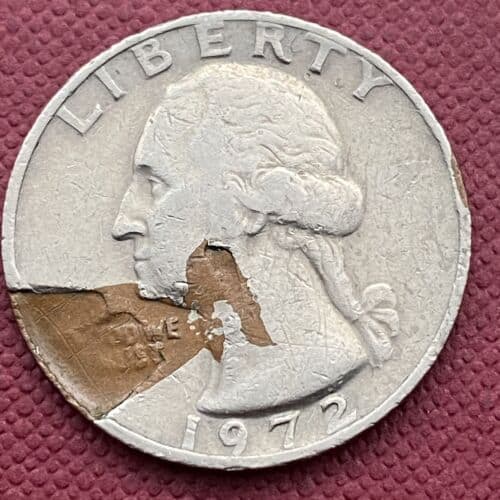
Quarters made in 1972 are made of copper and have a nickel clad. One of the common factory errors in these coins is missing clad.
You can notice this mint mistake just by observing the color of your quarter. Is it silver in color? If so, then your quarter doesn’t have this error. If it is red-brownish, then it’s possible that there was a factory mistake in which the coin wasn’t covered with nickel.
Keep in mind that the coins wear off over time and your quarter may just be in very poor condition. Don’t try to sell it as an errored one until you have checked that it is indeed.
2. 1972 Quarter Double Die Obverse
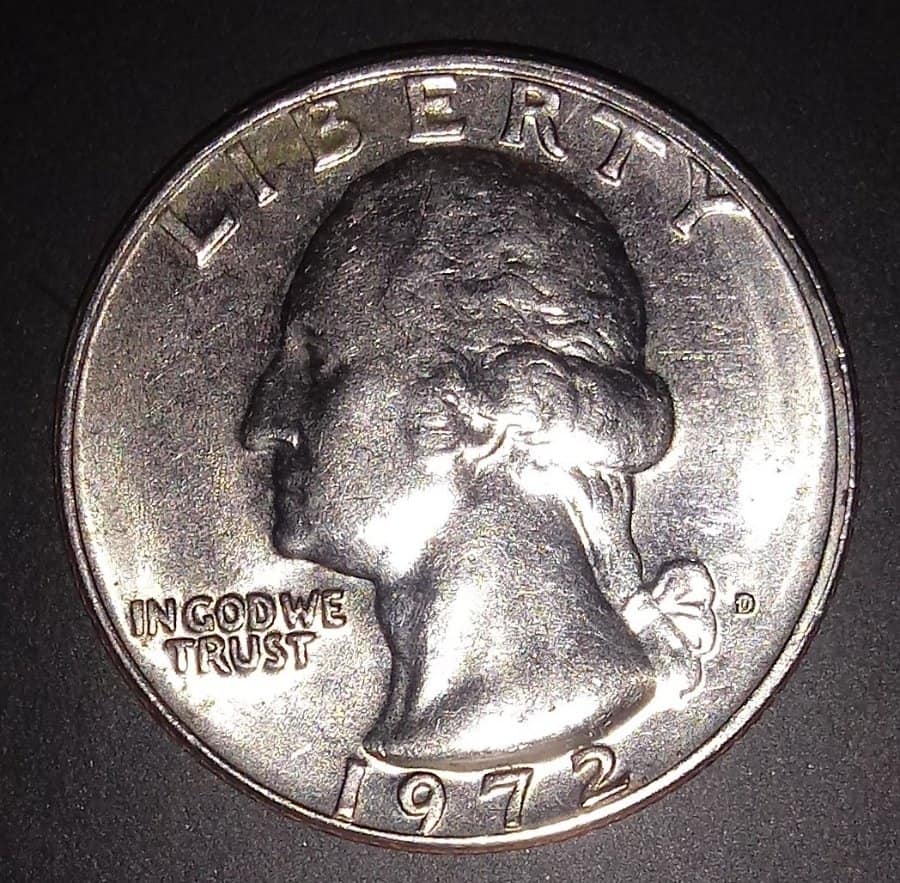
The double die error happens when the dies that engrave the design onto coins strike twice, leaving a doubled picture or at least parts of the picture.
In the case of a 1972 quarter, this error has been most commonly found on the obverse of the coin.
3. 1972 Quarter Off-Center Error
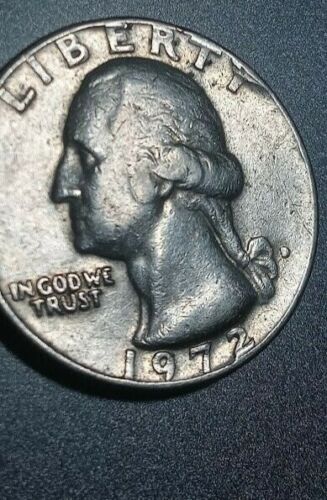
The off-center error is usually easily noticeable just by looking at a coin. It happens when a planchet is not correctly positioned in the machine, so when the dies strike, they don’t engrave the whole design onto the coin, leaving it partially empty and flat.
Some of the quarters from 1972 have this error so carefully observe each of the ones you have.
4. 1972 Quarter Clipped Planchet
A clipped planchet is another error that is obvious just by looking at a coin. It means that the coin is not whole as a result of an accidentally clipped planchet during the minting process.
It’s a very interesting mistake and these coins can sell for a lot, especially if they are in mint condition.
1972 Quarter FAQ
What is the error on a 1972 quarter?
There are several potential errors that you may find in the 1972 quarter. One of them is a missing clad, and you can identify it by carefully observing the color of your coin.
If it appears silver, your quarter is a regular one, but if it appears red or brown, it can be that your coin wasn’t covered with nickel in the production process.
Some of the other errors you can find on a 1972 quarter are double-die, clipped planchet, and off-center.
Is a 1972 quarter worth anything?
A 1972 quarter is usually not worth much. Most of them can be sold for their face value or a couple of dollars more. However, if your 1972 quarter is in mint condition and has an error that makes it rare, you can expect to sell it for hundreds of dollars.
What is a 1972 quarter made of?
A 1972 quarter is made of copper and covered with nickel.
Is a 1972 coin rare?
No. The US Mint made more than half a billion of these coins, so they are far from rare. You can still find them on the market for as little as twenty-five cents.
13 Most Valuable Kennedy Half Dollar Coins Worth Money (With Pictures)
Without further ado, let’s get started!
History of The Kennedy Half Dollar
The United States Mint first minted the Kennedy half dollar in 1964, a few months after the assassination of the beloved president, John Fitzgerald Kennedy.
The Kennedy half dollar, which replaced the Benjamin Franklin half dollar, was made from 90% silver and 10% copper.
However, this metal composition changed from 1965 to 1970, with the Mint striking coins made from a 79% copper core and an outer layer of 80% silver and 20% copper. The metal changes resulted from the copper shortage experienced at the time.
From 1971, all half dollars comprised 75% copper and 25% copper, with an inner core made from pure copper.
The coin’s design has remained the same from the first time it was struck in 1964. The obverse features President Kennedy’s left-facing portrait, while on the reverse, you will find the heraldic eagle holding an olive branch in one talon and a bunch of arrows in the other to symbolize independence.
The San Francisco, Denver and Philadelphia minting facilities minted the Kennedy half dollars. In 1964 alone, an estimated 156,205,446 half dollars were struck. From 2002 onwards, the Mint slowed down the production of these coins and only struck Kennedy dollars for collectors, which anyone could buy for face value.
At the start of 1992, the Mint struck a special Kennedy Half dollar proof containing 90% silver for collectors. In 1998, the half dollars containing 90% silver were released as matte and brilliant proof.
The most notable variety of the Kennedy dollar is the Accented Hair struck in 1964. Kennedy’s hair is deeply defined on these initial coins, but Jacqueline Kennedy, the president’s widow, did not like the design, requiring the Mint to make the hair appear softer. The Mint made the necessary changes, but a certain number of proof coins had already been struck
In 2022, after over two decades, the Federal Reserve ordered the Mint to produce more Kennedy coins for circulation. So, today you can easily acquire modern Kennedy half dollars. That said, the most valuable are silver Kennedy half dollars struck from 1964 to 1970.
Let’s now take a deeper look at Kennedy half dollars that are worth money.
Most Valuable Kennedy Half Dollar Worth Money
1. 1964 Kennedy Half Dollar Special Strike
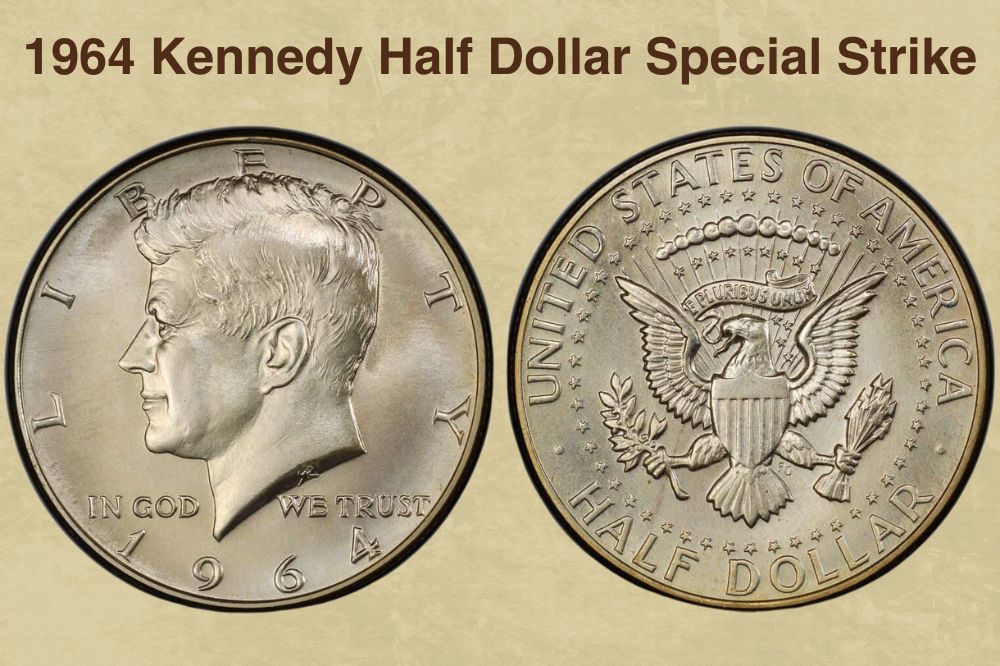
The 1964 Special Strike Kennedy half dollar is the rarest, non-error example in the series. This coin has unique qualities that distinguish it from other coins struck in the same year.
You will tell a 1964 special strike half dollar by its satiny finish, sharp obverse, and reverse design details. The rims are also exceptionally sharp and well-grounded.
These special coins typically won’t have contact marks, indicating that they were carefully minted and preserved to retain their special status. Unlike proof coins, the Kennedy half-dollar special strike has a matte finish, with the only visible marks being die-polishing lines.
To date, the Professional Coin Grading Service (PCGS) has certified only a dozen special strike Kennedy half dollars from 1964, highlighting that this is the rarest of all special strike coins struck in 1964.
The most expensive 1964 Kennedy half-dollar special strike was graded SP68 and auctioned for $156,000 at a Stack’s Bowers auction.
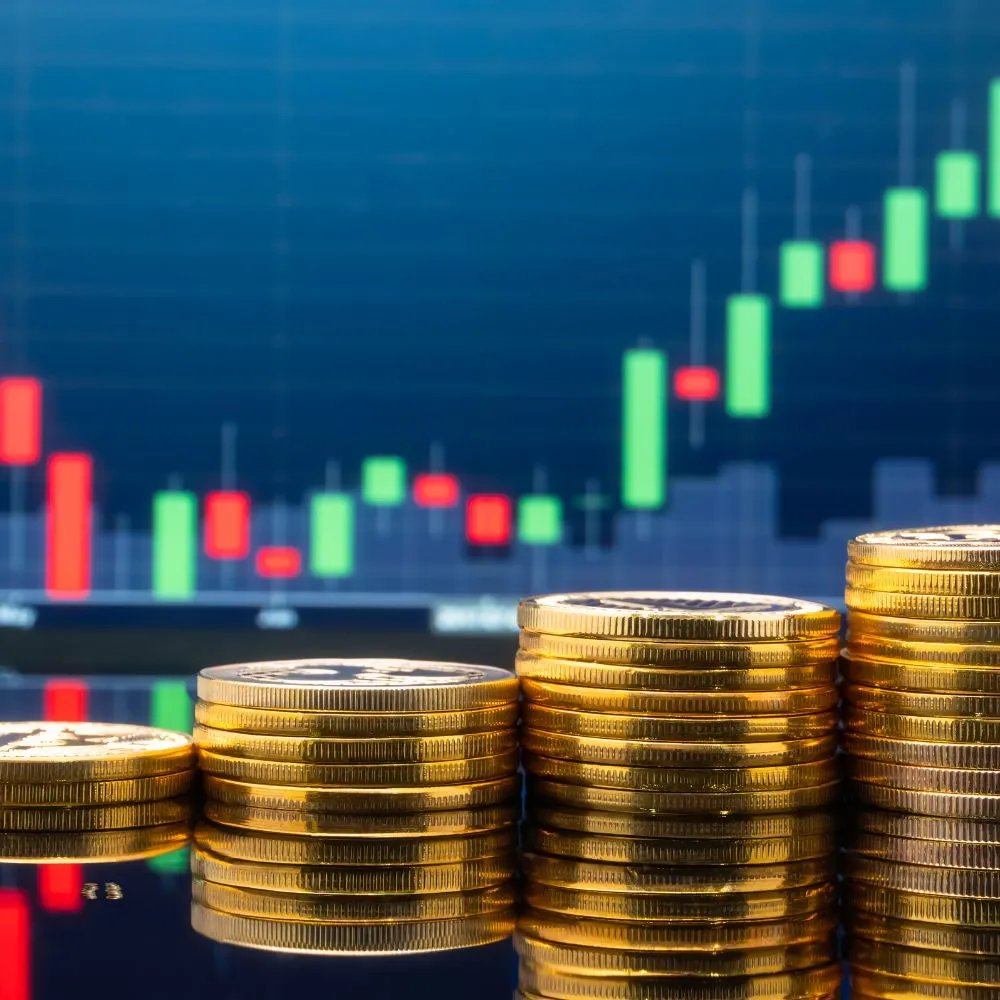
FREE Appraisal & Sell Your Coins
If you are still unsure about the price of your coins, you can appraise and sell your coins for free through our verified platform.
2. 1968 Kennedy Half-Dollar Proof
The Mint began striking proof Kennedy half dollars in 1968, with these coins displaying the mint mark S to indicate their San Francisco origin. Before then, the Mint had only struck proofs in 1964, and these were produced at the Philadelphia facility.
The 1968 Kennedy half-dollar proofs are of superior quality compared to the ones struck in 1964. As such, many of the available examples can be found in higher grades. Cameos are readily available, but deep cameos are increasingly rare and difficult to find.
A super rare deep cameo specimen graded PF70 was sold for $21,600 in a 2017 Heritage auction.
3. 1964 Kennedy Half-Dollar Proof
The 1964 proof was the first in the Kennedy half-dollar series. This collectors’ coin was struck in Philadelphia, and the finish is noticeably inferior.
Cameo and deep cameo examples are extremely rare, but proofs graded PF68 and lower are generally easier to find. As expected, cameo and deep cameo examples can be very expensive.
One exceptional example of a 1964 Kennedy half-dollar proof was graded PF70 and sold for $9,400.
4. 1964 Accented Hair Kennedy Half Dollar
The Accented Hair is the best-known variety in the Kennedy half-dollar series. The Mint used this design first to strike that year’s proof coins.
The design features extra hair above the president’s ear. On circulation 1964 Kennedy half dollars, the hair is softer and sparser. Another outstanding feature of the Accented Hair proof coin is the missing serif on the left of the letter I in LIBERTY.
The Accented Hair proof coin was struck for one year before the modified variety replaced it. Being a one-year issue coin makes the 1964 Accented Hair proof coin noticeably rare compared to the half-dollar circulation. Less than 5% of the coins struck that year have the Accented Hair design.
A regular Accented Hair proof with at least a PR69 rating can fetch as much as $3,100, while cameo and deep cameo examples are extremely rare. One deep cameo example graded PF68 was auctioned for $19,975.
5. 1976 (D) Kennedy Half Dollar
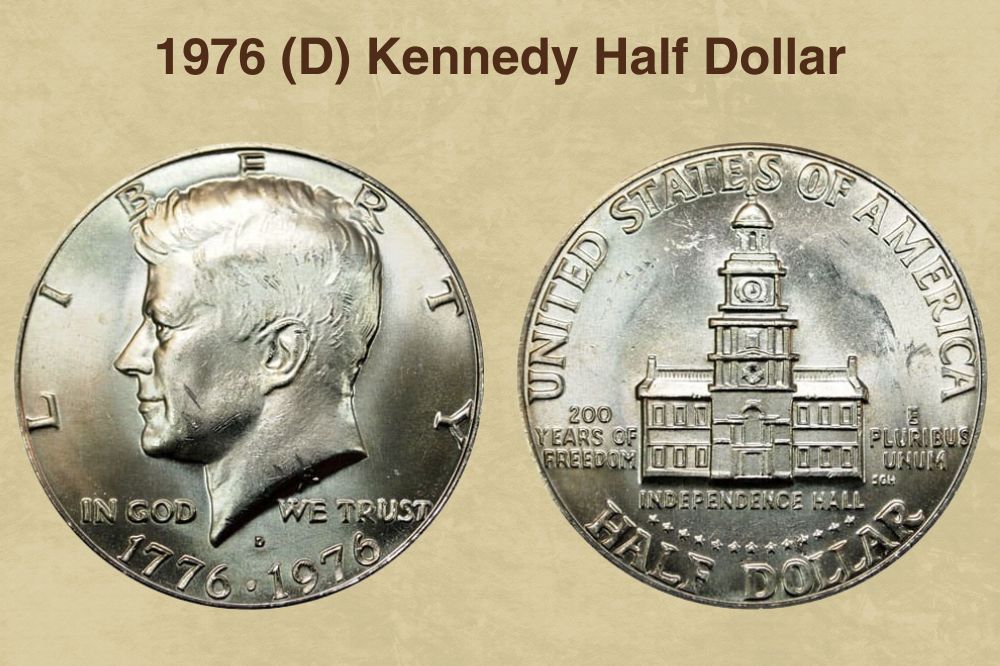
The Denver mint struck over 200 Kennedy half dollars in 1976, making these coins common. You will easily find 1976 D half dollars in your piggy bank or pocket change, which will usually be worth more or less their face value.
The 1976 Kennedy half dollars were a one-year issue, and being the country’s bicentennial year, many collectors hoarded these coins believing they were extremely valuable. Despite the hoarding, many more coins remained in circulation and are only worth their face value.
The population begins to dwindle for half dollars graded MS64. 1976 D Kennedy half dollars graded MS67 and above are exceptionally rare, and less than a dozen examples are certified.
One example, certified as GENUINE by the Professional Coin Grading Service (PCGS), was sold for a whopping $10,000 in 2021 at an online auction.
6. 1971 D Kennedy Half Dollar
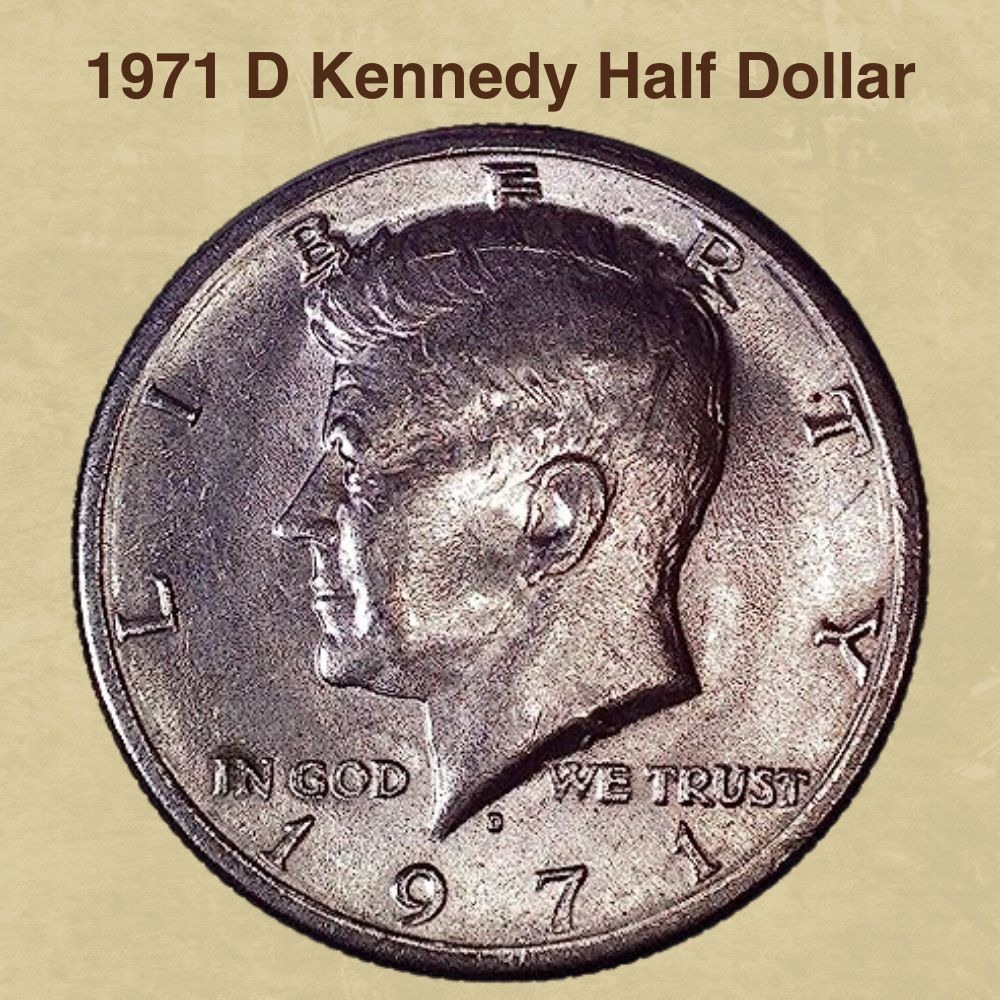
Want to Find the best coin dealer near you? Here we can help. (with customer reviews and Rating)
The year 1971 is significant in the numismatic world; it is when the Mint changed the metal composition of Kennedy dollars from 90% silver to 40%.
Millions of Kennedy half dollars were struck at the Denver facility, making this coin very common. You can easily find them in home coin jars and banks, and most of the circulated varieties are only worth their face value.
The value of 1971 D Kennedy half dollars begins to increase at MS67. These coins are pointedly scarce in high-grade mint state, with less than 500 examples known. In grades higher than MS68, 1971 D Kennedy half dollars are almost impossible; any lucky finds would be worth a fortune.
The most expensive example was graded MS61 and fetched a clean $13,000 at an eBay auction in 2018.
7. 1969 D Kennedy Half Dollar
The 1969 D Kennedy half dollar contained reduced silver from 90% to 40%, with copper making up the rest of the coin’s metal composition.
This particular issue is relatively common in circulated conditions, with examples only worth more or less their face value. Like other silver Kennedy half dollars minted between 1965 and 1970, collectors hoarded quite several 1969 Kennedy half dollars.
Because newly minted coins were pulled out of circulation, it is possible to obtain Kennedy half dollars dated 1969 in mint state. But starting from grade MS65, the population begins to dwindle, and at MS67, examples are extremely hard to obtain, with fewer than 50 pieces known to exist.
In 2017, a collector paid $15,600 at an auction for a 1969 Kennedy half-dollar graded MS67, making this the most expensive example from 1969.
8. 1966 P Kennedy Half Dollar
The 1966 Kennedy half dollar has one of the lowest mintage in the silver-clad series struck between 1965 and 1970.
Half dollars from this year are common in low-grade mint state but become harder to obtain as you go up the grading scale. There are fewer than 200 known examples in MS66, and less than 15 in grade MS67 and above are certified.
You would definitely be lucky to obtain a 1966 no-mint mark in gem condition. Half dollars from Philadelphia were generally of a lower quality compared to those minted in Denver and San Francisco.
The most expensive 1966 P Kennedy half-dollar was graded MS67 and sold for $15,100 in 2020 at an eBay auction.
9. 1977 Kennedy Half Dollar
By the late 1970s, the quality of the coin had significantly improved. It is common to come across 1977 Kennedy half-dollar examples in grades MS66 and MS67.
Coins graded MS68 to MS70 are also obtainable though you might have to look around more for these as less than 200 specimens are certified.
If you find a 1977 Kennedy half-dollar graded MS64 and above, you should consider yourself lucky, as these are the most valuable for that year. One example fetched $9,200 at a Bowers and Merena auction in 2005.
10. 1970 D Kennedy Half Dollar
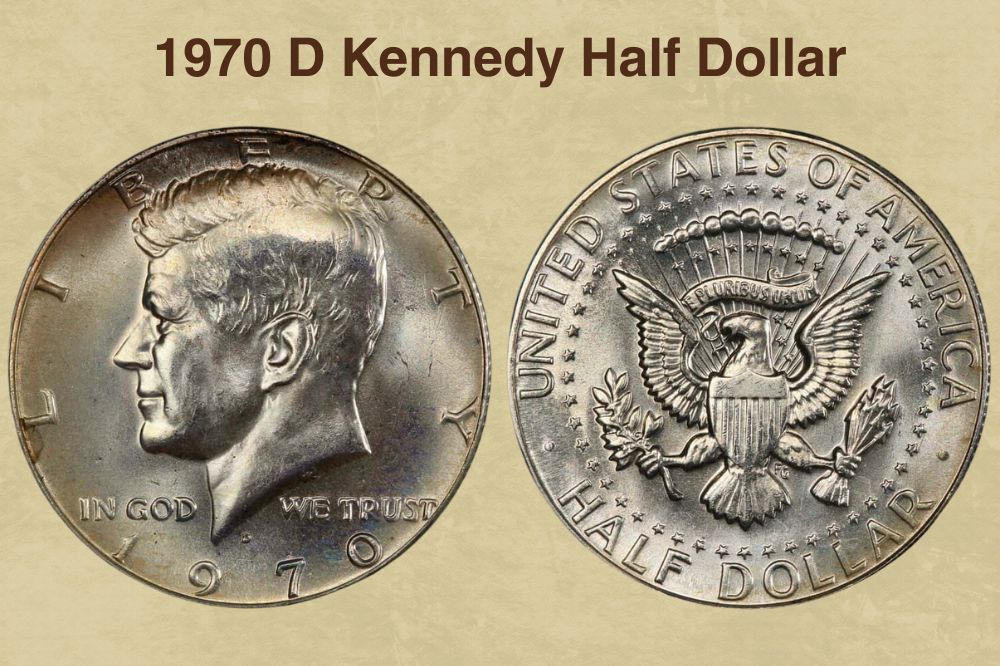

FREE Appraisal & Sell Your Coins
If you are still unsure about the price of your coins, you can appraise and sell your coins for free through our verified platform.
The 1970 Kennedy half dollar with a mint mark D was only available to collectors and was sold in Mint Sets containing nine other coins. With the Mint striking about 2 million coins, this year’s half dollar had the lowest mintage for Kenedy half dollars from 1964 to 2005.
The Denver facility was the only one that minted business strike Kennedy half dollars in 1970. Meanwhile, the San Francisco mint struck the proof coins bearing an S mint mark.
This year was also significant as it was the last time the Mint struck business strike Kennedy half dollars in silver. The next silver proofs made a comeback in 1992.
The most expensive 1970 D Kennedy half dollar sold for $7,495 in a 2023 online auction.
11. 1970 S Kennedy Half Dollar
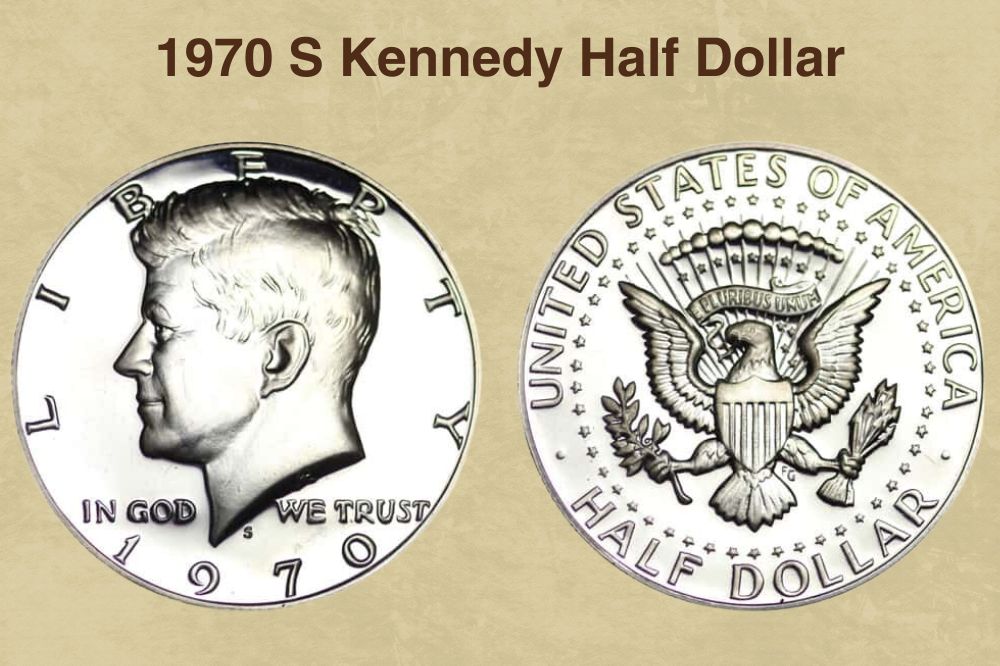
The San Francisco mint struck about 2.6 million proof Kennedy half dollar. Since these were proof coins, they were not intended for circulation and are extremely rare. Only a few individuals and coins-related companies obtained the 1970 proof half dollars.
Examples in 1967 and above are easily obtainable. The fact that this was the last year the Mint struck Kennedy half-dollar proofs in silver (production resumed 20 years later) makes 1970 a key date in the Kennedy half-dollar series.
The most expensive example, graded PF67, fetched $7,475 in a 2007 Heritage auction.
12. 1980 D Kennedy Half Dollar
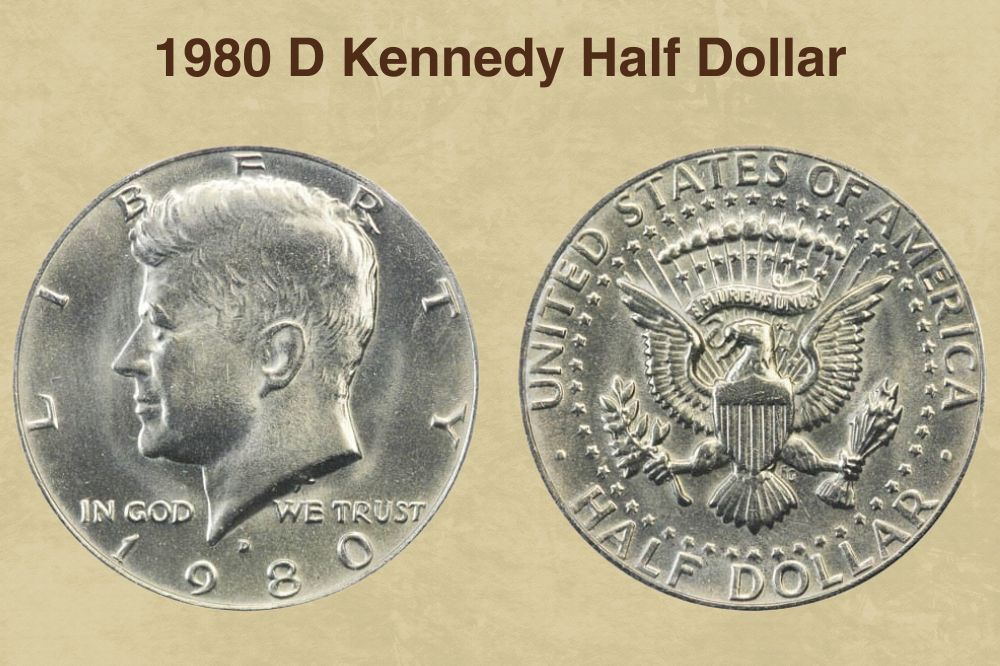
The Denver mint struck an estimated 33 million Kennedy half dollars in 1980. Coins coming from the Denver facility were noticeably of a higher quality than those struck in Philadelphia.
Given the considerably high mintage, the 1980 D Kennedy half dollar is easy to obtain circulated condition. But the population decreases at MS66, with most examples found in Mint Sets and unopened rolls.
This coin is particularly difficult to find in higher mint state grades. At MS67, there are less than 100 known examples, and the population dwindles further in MS68 and above, with fewer than a dozen in existence.
In 2015, a collector paid 49835 for a 1980 D Kennedy half-dollar graded MS68.
Want to Find the best coin dealer near you? Here we can help. (with customer reviews and Rating)
13. 1976 S Bicentennial Kennedy Half Dollar
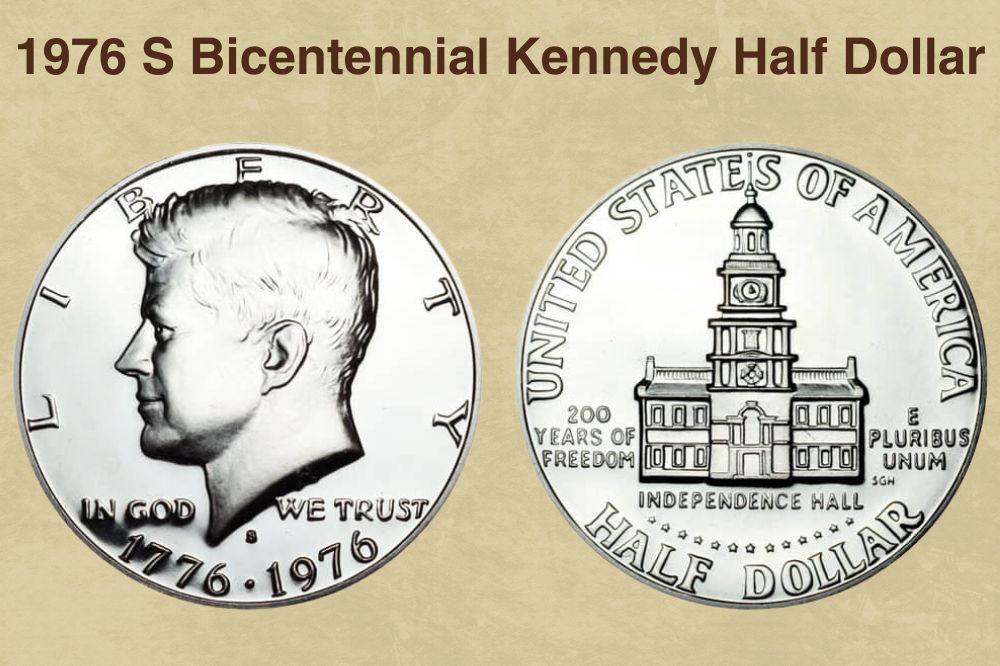
In 1976, the Mint struck a set of circulating bicentennial coins to commemorate the country’s 200 years of independence. The set consisted of the Eisenhower dollar, Kennedy half dollar, and Washington quarter.
These coins featured the date 1776-1976 and were a one-year issue. That same year, the Mint struck three separate circulation strike Kennedy half dollars and two sets of proofs.
Aside from the 1776-1976 Bicentennial half dollar, the other two circulation strike half dollars in the series included the clad 1976 P and D Bicentennial Kennedy half dollars.
In addition to the regular clad coins, the Mint struck a silver proof 1976 S Kennedy half dollar and a clad proof.
Unlike the 1776-1976 Bicentennial half dollar, reserved for collectors, the Mint released the clad coins into circulation, making them harder to find in the uncirculated mint state.



